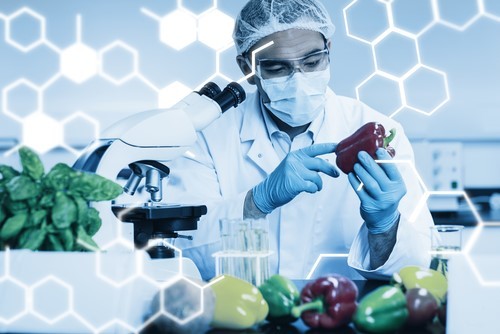Peter J. Hesketh, Matthew Ballard, Alexander Alexeev, and Srinivas Hanasoge from the School of Mechanical Engineering at Georgia Tech have developed a rapid method for preconcentration of bacteria in a sample for further analysis utilizing a microfluidic design. The system is comprised of nickel iron magnetic cantilevers and magnetic beads that are functionalized as artificial cilia to provide attachment of biotinylated antibodies to target bacteria in a sample. An external magnetic field is applied to move the cantilevers in the sample with a rotating motion to enhance sample mixing in the microchannel design and enhance the efficiency of the sample by isolating and binding the target bacteria.
The target bacteria are concentrated for detection with florescent, electrochemical or quantum dot labeling. The magnetophoresis system was demonstrated in a hybrid lattice Boltzmann / lattice spring model to simulate the microfluidic system, including fluid dynamics and the dynamics of magnetic beads with rod-shaped salmonella which are suspended in the fluid. In simulation studies, the system was demonstrated to have rapid salmonella capture, such that 95% of salmonella are captured from channels of height up to 6 times the magnetic bead diameter within only a few millimeters of channel length.
- Offers an inexpensive and rapid method for sample pre-concentration to improve food safety assays
- Provides enhanced mixing and a high probability of target bacteria capture
- Enables detection of low concentrations of target bacteria
- Functionalization of the cilia can provide multiplexing for a variety of target bacteria
This invention would be useful in the testing of samples for target bacteria. The novel system could enable efficient preconcentration and biodetection of bacteria in food and water samples.
There is an increasing demand for microbial detection in the food industry due to enhanced regulatory, quality, and compliance programs. Detection of low concentrations of bacteria is challenging at best with current assays. The food industry is continuously searching for improved tools that are faster, more accurate and more sensitive than traditional methods.

